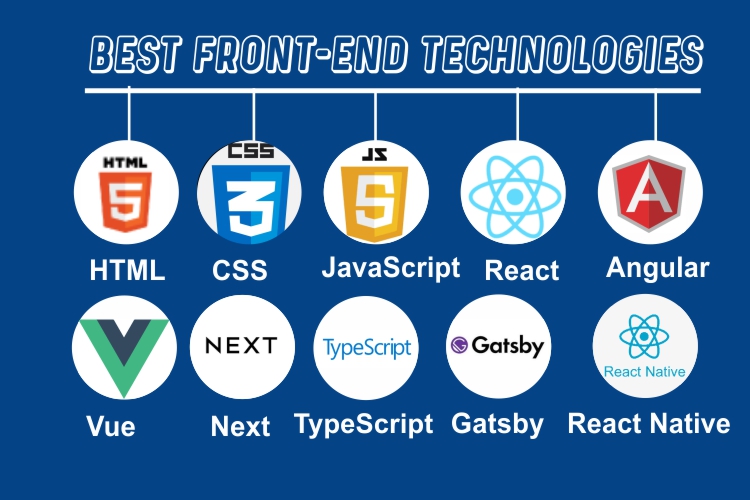The Frontline of Web Design: Uncovering the Latest Front-End Technologies.

Ethan Techwright
May 19, 2023 • 8 min read

Top 5 Front-End Technologies to Use in 2023 and Beyond
Development in 2023 Introduction: The field of front-end web development is constantly evolving, with new technologies emerging and existing ones maturing.
As we enter 2023, it's important for developers to stay updated with the latest front-end technologies that can enhance their productivity, improve user experiences, and future-proof their applications.
In this blog post, we'll explore the top 5 front-end technologies to consider using in 2023 and beyond.
Whether you're a seasoned developer or just starting your journey, these technologies will empower you to create remarkable user experiences and streamline your development workflow.
1. React:
React has been a dominant player in the front-end landscape for several years, and its popularity continues to rise.
Developed by Facebook, React is a JavaScript library that enables developers to build reusable UI components.
Its virtual DOM (Document Object Model) and efficient rendering make it ideal for building scalable and high-performance web applications.
With a large and vibrant ecosystem, React offers extensive community support, numerous libraries, and powerful tools such as React Router and Redux for state management.
2. TypeScript:
TypeScript has gained significant traction among front-end developers due to its ability to add static typing to JavaScript.
It enhances code quality, improves maintainability, and enables better collaboration in large-scale projects.
TypeScript provides features like type checking, interfaces, and advanced editor support, catching potential errors early in the development process.
With its growing adoption, TypeScript is poised to become a standard in front-end development, making codebases more robust and less prone to bugs.
3. Vue.js:
Vue.js has been gaining significant momentum in recent years, and it's poised to make even more waves in 2023.
Its simplicity, versatility, and gentle learning curve make it an ideal choice for developers of all levels. It offers a progressive approach to building user interfaces, allowing developers to gradually adopt its features as needed.
Its component-based structure and intuitive API make it a developer-friendly choice.
With a growing ecosystem and a supportive community, Vue.js is gaining momentum and becoming a solid option for building modern web applications.
4. GraphQL:
GraphQL is a query language and runtime for APIs that offers a more efficient and flexible way to request and manipulate data.
Unlike traditional REST APIs, GraphQL enables clients to request only the data they need, reducing over-fetching and under-fetching issues.
It provides a strongly typed schema, introspection capabilities, and powerful tools for data fetching and manipulation.
GraphQL works well with various front-end frameworks, making it a valuable technology for building scalable and data-driven applications.
5. WebAssembly (Wasm):
WebAssembly is a binary instruction format that allows running code at near-native speeds in web browsers.
It opens up new possibilities for front-end development, enabling developers to build complex applications using languages like C++, Rust, and Go.
WebAssembly bridges the gap between web and native applications, making it feasible to port existing software to the web or build performance-critical components directly in the browser.
With broader browser support and increasing adoption, WebAssembly has the potential to revolutionize web development.
Conclusion:
Front-end technologies play a crucial role in shaping the modern web and delivering exceptional user experiences.
As we look ahead to 2023 and beyond, React, TypeScript, Vue.js, GraphQL, and WebAssembly stand out as top choices for front-end development.
They offer powerful features, improved developer productivity, and the ability to build performant and scalable applications.
By leveraging these technologies, developers can stay ahead of the curve and create cutting-edge web experiences in the dynamic world of front-end development.